SUMMER DRUMMER
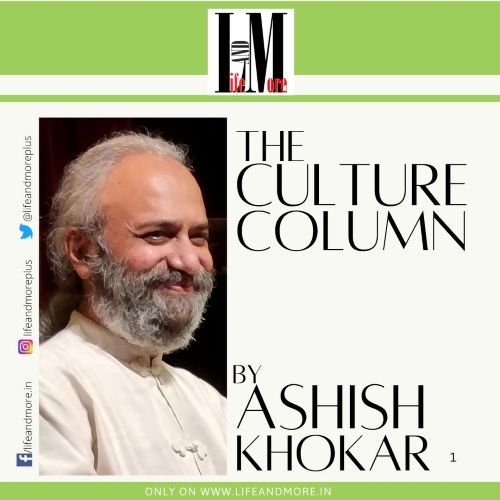
Damaru har har baje goes the popular Shiva stuti. Summer is here but drummers are quiet! And everyone in most of the hot and happening North India or South, East or West wish they were in cooler climes. Only one metro – Bangalore is 25 degrees in June! – read my lips T.W.E.N.T.Y F.I.V.E!
Landing in Delhi of 49 degrees, yes forty nine, one felt one was in a furnace. T3 is exposed and the hot winds reminded one of Ismat Chugtai unpublished stories, adapted by MS Sathyu as Garam Hawa, a cult film made with Bhisham Sahni in the 1974 on the Partition of India. As a grand- child of that Partition, when our families had to leave West Punjab (now in Pakistan) overnight and run with whatever we possessed in two trunks, one sees old photos and hears stories of that horror which the rest of India hardly suffered. Except Bengal. They too suffered the Partition aftermath. As Independence Day approaches, we recall those sacrifices and sufferings in North India, especially Punjab, Kashmir regions more. There was no Himachal then. Reimagining Jammu Kashmir today (is title of a fine book by Ashish Sharma, published beautifully by Bloomsbury).
Kashmir by Ashish Sharma is a stupendous pictorial feast, a labour of love. Fields of Saffron, Lavender juxtapose with city life. The sheer scale and beauty of the region comes through. Truly, agar zameen-e-Firdaus-ast, then yahi hai.
It was all PEPSU. Patiala and East Punjab States Union (PEPSU) was a state of India, uniting eight princely states between 1948 and 1956. The capital and principal city was Patiala. The state covered an area of 26,208 kms. Shimla, Kasauli, Kandaghat and Chail also became part of PEPSU.
Pepsi? One young Indian asked me recently. I said no, no PEPSU. He thought Pepsi was invented or made in PEPSU! Shows our education system and how commercial branding of an aerated drink has reached the world. Young people are flying all over the Internet without even knowing what to look for.
What’s brand India? Culture. Totally under- branded. Summer is the best time to visit museums and learn. The best kept museums are less visited and known. Indian families will go to a mall but not a hall where art is happening. In most cities there are many big and small museums and archives of interest. The best kept and most visited are: Mumbai, Prince of Wales (Shivaji Sangrahalaya); Chennai Dakshinachitram and Egmore; Pune, Raja Kelkar; Bangalore has MAP; Amritsar, the Partition Museum; Baroda Palace Museum, ditto Jaipur. Jodhpur has Mehrangarh. Hyderabad, Salar Jung, Trivandrum, Raja Ravi Varma Museum, Kolkata India Museum, Patna Museum, Ahmedabad had the Textiles Museum, add Bhubaneswar State Museum. Delhi being the Capital has many like the PM museum in Teen Murti, Crafts Museum, and now IGNCA (in the old Janpath hotel) houses the best cultural archives of India.
45 collections are preserved here, of which five seven are world recognised treasures like Raja Deen Dayal photo collection; Anand Coomarswamy Papers; Mohan Khokar Dance Collection; Elisabeth Brunner Painting Collection; VAK Ranga Rao Music and film materials and others. Summer is the best time for all gurus and teachers to send their students to learn more than just items and songs. Without history and heritage there’s no culture, no sanskar, no tradition.
Drummers are gone in summer yet a Krishnaswamy Music Instruments Collection can show old photos of different types of instruments.
Opening Damaru and these drummers from
Krishnaswamy Music Collection @ IGNCA
Summer in most metros means no dance music shows. No art exhibitions. Yoga day and bhoga for those who can afford mountain air. Mussoorie, Manali or Munnar. The roads this government, under a dynamic PM Modi team led on roads front by Gadkari, are amazing. A drive from Delhi to Haridwar that took seven hours earlier now takes four. Spiffy, smooth as butter and wow, one is in Haridwar or Doon or Kasauli in a jiffy. No stress.
Haridwar needs a visit by Yogi, the CM of UP. so that public facilities improve. Parking for one. Takes 20 minutes to enter a parking lot by Har ki Pauri that should take five. No attendant, no signage, no nothing. Problem is when a DM or CM or MP types visit, they have VVIP parking. For common folks, who pay taxes – including lifetime for roads upon buying a vehicle (because later one might not see the pathetic condition of roads, say in a high tech village like Bangalore!) – listen to laws, follow rules then they must be at the receiving end. No good deed goes unpunished! Common man must suffer else he won’t be common. Haridwar needs a makeover, like Benaras has got.
Common issue prevailing in the arts is actually public support. Government has done what it could for decades. Society now must put a premium on the arts. Sports they do, na. Films also. Why not performing arts? No one buys tickets, often. Film and theatre one pays for and more so for popcorn! But classical or traditional arts can’t muster even 200 in a hall in metro India. Then this begs a question “Whom are they dancing for?” Or singing, as though there’s no tomorrow. Same artistes abroad get full halls and handful of daaallu too! Which means Indians abroad value their arts more? Or the system there does not permit free culture. Most South Indian dancers and musicians are not in India in these months of May to September. They earn lots abroad then come and sit peacefully in India and do sundry shows in the season, to be visible or relevant. They want to be seen so they are not forgotten but main earning comes from foreign tours.
A serious concern is that there are too many artistes now. Anyone who learns the basics, thinks they have arrived. Then they start teaching! At 25/30 most are calling themselves vidwans of late. Teaching gets them a livelihood. No harm, and that’s important but to think then the system and society owes anything, is asking for the moon. By 30+ most now want govt recognition (ICCR, DD empanelment) if not an award. Anyone and everyone nearing 40 thinks they deserve an Akademi award (that’s SNA – Sangeet Natak Akademi not Shiv Nath Academy!). Under 40 think the yuva award named after Ustad Bismillah Khan is their birthright! Just because they near 40 doesn’t mean they have earned it. What’s their NATIONAL outreach, impact or standing? Where is any standard or objectivity left?
Hasya Kavi Kaka Hathrasi met Swami Vivekananda in scientist CV Raman, in the mind of officer and a gentleman Indro ka Raja Rajendra who highlights wisdom on yesterday and tomorrow so Kalkal. Invited by Achal Pandya, HoD, Conservation and Cultural Archives of IGNCA, Delhi to share gyan, Rajendra Kalkal was a laugh a minute philosopher. He made deep topics light and boring subjects maha engaging. He is a humourist, artist, law enforcement officer and more: sincere speaker who touches both head and heart. One hour passed so quickly, it shows command of subject, an engaging talk and meaningful engagement on aspects of life and wife! The full Umang Hall for once justified its name and all went home happy. Such genuine folks are rare in today’s world. Follow him on YouTube.
IPS officer Rajendra Kalkal
Objectively the only way forward is to excel. Do so well in your domain and get a real standing. Society may values shine but only substance will take one far. Pink is the navy blue of India. Happy colours! Beyond summers…. When there’s winter, can spring be far behind.
Ashish Khokar is India’s reputed arts historian, author and writer with 51 books to credit and 5k articles in the print media in the last 50 years. A pioneer in arts admin from the 1970s, he has worked nationally (STAS, Sahitya Kala Parishad, INTACH, Martand Singh Asso) and internationally ( Festivals of India in France, Sweden, Germany , China and with AFS of USA as its India head) with many agencies,
institutions, museums and more. At heart a teacher, his discourses are full of information with humour and he is an expert visiting many universities and also written 85 modules for UGC’s E- pathshala M.A. Course. He is also the editor-publisher of India’s only yearbook on dance – attenDance – now in its 25th year. He has given attenDance awards to 40+ talents in the last 15 years and mentors many.
He was the dance critic of the Times of India for 20 years, The Hindu for 5 and continues to be a contributor to India Today for the last 25 years. Ditto 25 years for India’s best portal for dance, narthaki.
As custodian of India’s largest dance archives and collection valued at 7 crores – built by his illustrious family Mohan and Saroja Khokar and donated to the nation@IGNCA – he has shown the way to selfless service to India and its arts, education and culture.



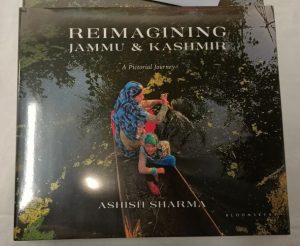
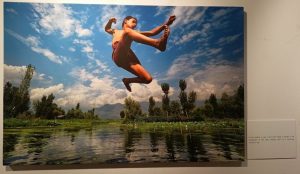
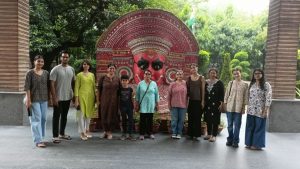
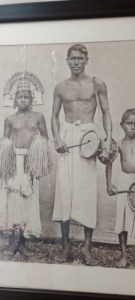
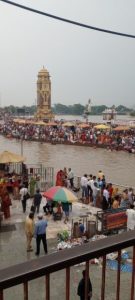
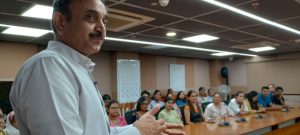
3 Comments
Dear Anna ,
Great one . I found the write up so meaningful. Yes vacation in this scorching heat can be used for Indore plannings to museum visits or so .
Each suggestion means a lot .
Reading any article of Khokarji is like immersing oneself in the Indian culture’s diverse kaleidoscopic hues and colours with absolute delight. Of course, summer months in North and South is quite a contrast. Bengaluru’s weather is fentabulous, round the year. People calling Bengaluru will vouch for it, notwithstanding traffic vagaries and travails. Blessed are those who call Bengaluru home. Period.
Reminds me the maxim ‘you don’t have to prove, but improve always ‘ makes imminent sense. Most crave for instant recognition, artists included. Did someone say there’s gestation period for everything? Indeed. May be wannabe artists are in a hurry to get recognised to beat the competition. Earning the spoor takes tremendous efforts. Sometimes, lifetimes itself. No shortcuts to success, you see. Yes, free culture is all pervading. Malls are frequented, museum halls are as an after thought. The onus is on parents to show the way by striving to imbibe our rich heritage. Will we? Hopefully, yes.
Ashish Sir- You have covered so many interesting and pertinent topics in this article! You know how to keep the readers hooked. You’ve hit the nail on the head by saying Indians prefer malls to museums. It’s a glaring reflection of our country’s sad state of affairs, and its changing ethos. As educated members of the artistic community, we must try and enforce the habit of visiting museums among the younger generations. There’s so much to learn and be inspired by, in each of the museums you have mentioned. To all the dancers out there- I would strongly recommend a visit to the treasure trove at the IGNCA- Mohan Khokhar Dancer Archives which is like LegoLand for dancers.